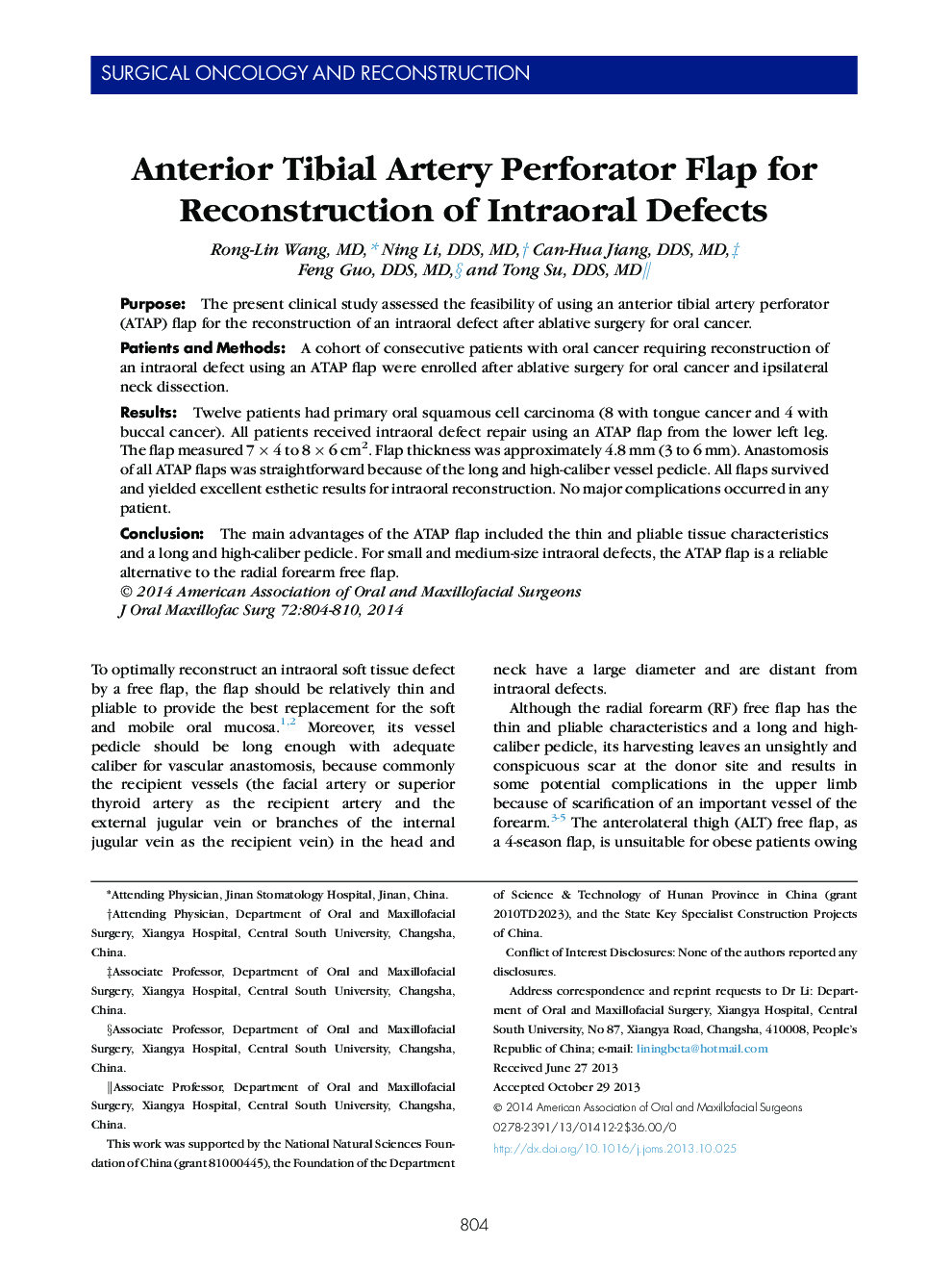| Article ID | Journal | Published Year | Pages | File Type |
|---|---|---|---|---|
| 3152921 | Journal of Oral and Maxillofacial Surgery | 2014 | 7 Pages |
PurposeThe present clinical study assessed the feasibility of using an anterior tibial artery perforator (ATAP) flap for the reconstruction of an intraoral defect after ablative surgery for oral cancer.Patients and MethodsA cohort of consecutive patients with oral cancer requiring reconstruction of an intraoral defect using an ATAP flap were enrolled after ablative surgery for oral cancer and ipsilateral neck dissection.ResultsTwelve patients had primary oral squamous cell carcinoma (8 with tongue cancer and 4 with buccal cancer). All patients received intraoral defect repair using an ATAP flap from the lower left leg. The flap measured 7 × 4 to 8 × 6 cm2. Flap thickness was approximately 4.8 mm (3 to 6 mm). Anastomosis of all ATAP flaps was straightforward because of the long and high-caliber vessel pedicle. All flaps survived and yielded excellent esthetic results for intraoral reconstruction. No major complications occurred in any patient.ConclusionThe main advantages of the ATAP flap included the thin and pliable tissue characteristics and a long and high-caliber pedicle. For small and medium-size intraoral defects, the ATAP flap is a reliable alternative to the radial forearm free flap.
